#d1d1da Color Information
In a RGB color space, hex #d1d1da is composed of 82% red, 82% green and 85.5% blue. Whereas in a CMYK color space, it is composed of 4.1% cyan, 4.1% magenta, 0% yellow and 14.5% black. It has a hue angle of 240 degrees, a saturation of 10.8% and a lightness of 83.7%. #d1d1da color hex could be obtained by blending #ffffff with #a3a3b5. Closest websafe color is: #cccccc.
-
- R 82
- G 82
- B 85
-
- C 4
- M 4
- Y 0
- K 15
● #d1d1da color description : Light grayish blue.
#d1d1da Color Conversion
The hexadecimal color #d1d1da has RGB values of R:209, G:209, B:218 and CMYK values of C:0.04, M:0.04, Y:0, K:0.15. Its decimal value is 13750746.
| Hex triplet | d1d1da | #d1d1da |
|---|---|---|
| RGB Decimal | 209, 209, 218 | rgb(209,209,218) |
| RGB Percent | 82, 82, 85.5 | rgb(82%,82%,85.5%) |
| CMYK | 4, 4, 0, 15 | |
| HSL | 240°, 10.8, 83.7 | hsl(240,10.8%,83.7%) |
| HSV (or HSB) | 240°, 4.1, 85.5 | |
| Web Safe | cccccc | #cccccc |
| CIE-LAB | 84.079, 1.667, -4.446 |
|---|---|
| XYZ | 61.748, 64.218, 75.468 |
| xyY | 0.307, 0.319, 64.218 |
| CIE-LCH | 84.079, 4.748, 290.548 |
| CIE-LUV | 84.079, -0.516, -7.096 |
| Hunter-Lab | 80.136, -2.698, 0.259 |
| Binary | 11010001, 11010001, 11011010 |
Color Schemes with #d1d1da
Alternatives to #d1d1da
Below, you can see some colors close to #d1d1da. Having a set of related colors can be useful if you need an inspirational alternative to your original color choice.
#d1d1da Preview
This text has a font color of #d1d1da.
<span style="color:#d1d1da;">Text here</span>This paragraph has a background color of #d1d1da.
<p style="background-color:#d1d1da;">Content here</p>This element has a border color of #d1d1da.
<div style="border:1px solid #d1d1da;">Content here</div>.text {color:#d1d1da;}.background {background-color:#d1d1da;}.border {border:1px solid #d1d1da;}Shades and Tints of #d1d1da
A shade is achieved by adding black to any pure hue, while a tint is created by mixing white to any pure color. In this example, #070708 is the darkest color, while #fcfcfd is the lightest one.
-
#070708
#070708rgb(7,7,8) -
#0f0f13
#0f0f13rgb(15,15,19) -
#18181e
#18181ergb(24,24,30) -
#212129
#212129rgb(33,33,41) -
#2a2a34
#2a2a34rgb(42,42,52) -
#32323f
#32323frgb(50,50,63) -
#3b3b4a
#3b3b4argb(59,59,74) -
#444454
#444454rgb(68,68,84) -
#4d4d5f
#4d4d5frgb(77,77,95) -
#55556a
#55556argb(85,85,106) -
#5e5e75
#5e5e75rgb(94,94,117) -
#676780
#676780rgb(103,103,128) -
#70708b
#70708brgb(112,112,139)
-
#7a7a94
#7a7a94rgb(122,122,148) -
#85859d
#85859drgb(133,133,157) -
#9090a6
#9090a6rgb(144,144,166) -
#9b9bae
#9b9baergb(155,155,174) -
#a6a6b7
#a6a6b7rgb(166,166,183) -
#b0b0c0
#b0b0c0rgb(176,176,192) -
#bbbbc9
#bbbbc9rgb(187,187,201) -
#c6c6d1
#c6c6d1rgb(198,198,209) -
#d1d1da
#d1d1dargb(209,209,218) -
#dcdce3
#dcdce3rgb(220,220,227) -
#e7e7eb
#e7e7ebrgb(231,231,235) -
#f2f2f4
#f2f2f4rgb(242,242,244) -
#fcfcfd
#fcfcfdrgb(252,252,253)
Tones of #d1d1da
A tone is produced by adding gray to any pure hue. In this case, #d4d4d7 is the less saturated color, while #aeaefd is the most saturated one.
-
#d4d4d7
#d4d4d7rgb(212,212,215) -
#d1d1da
#d1d1dargb(209,209,218) -
#cecedd
#ceceddrgb(206,206,221) -
#cbcbe0
#cbcbe0rgb(203,203,224) -
#c7c7e4
#c7c7e4rgb(199,199,228) -
#c4c4e7
#c4c4e7rgb(196,196,231) -
#c1c1ea
#c1c1eargb(193,193,234) -
#bebeed
#bebeedrgb(190,190,237) -
#bbbbf0
#bbbbf0rgb(187,187,240) -
#b7b7f4
#b7b7f4rgb(183,183,244) -
#b4b4f7
#b4b4f7rgb(180,180,247) -
#b1b1fa
#b1b1fargb(177,177,250) -
#aeaefd
#aeaefdrgb(174,174,253)
Color Blindness Simulator
Below, you can see how #d1d1da is perceived by people affected by a color vision deficiency. This can be useful if you need to ensure your color combinations are accessible to color-blind users.
